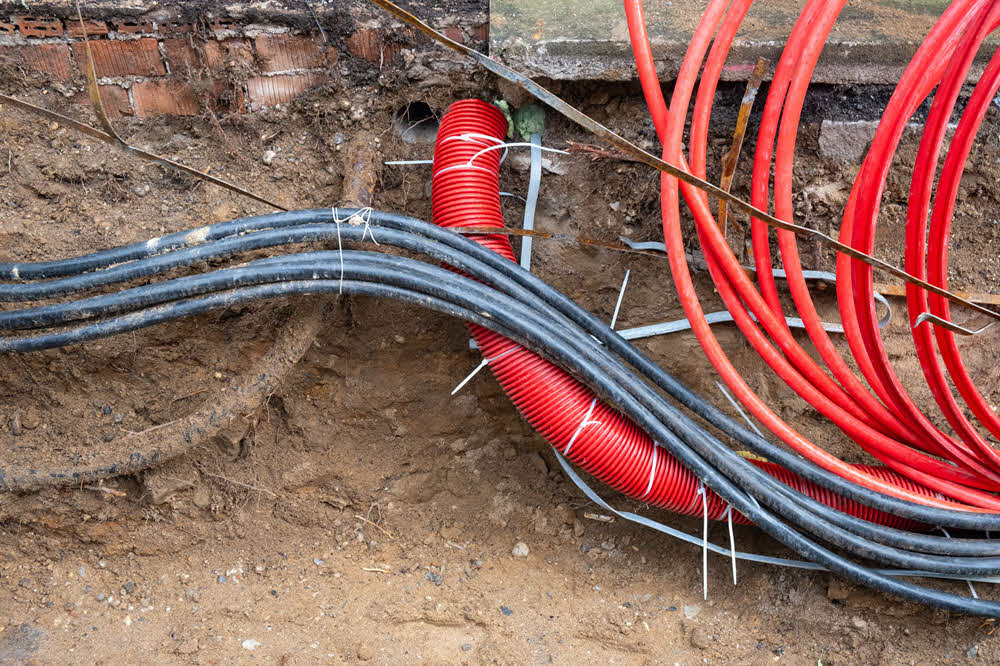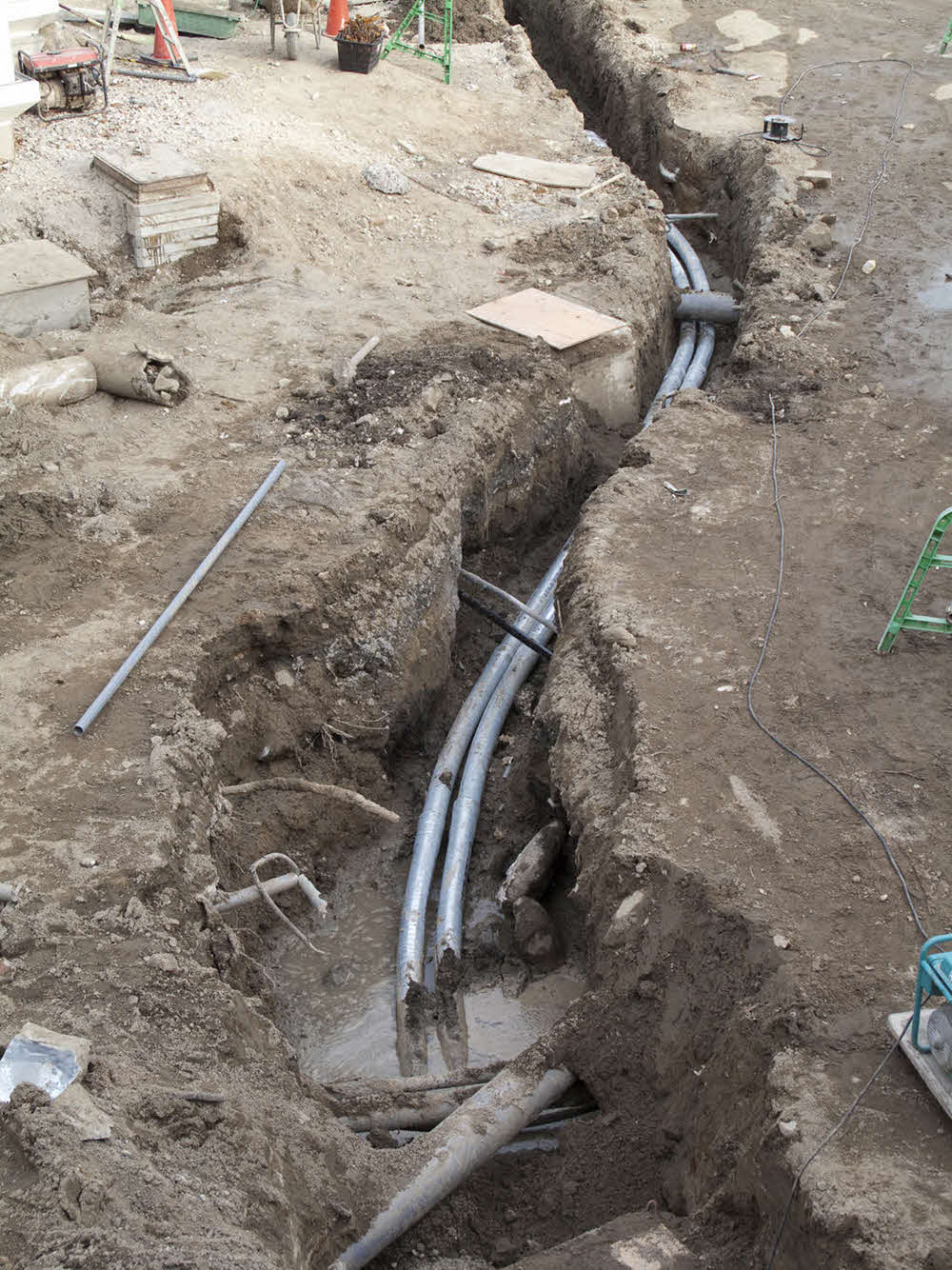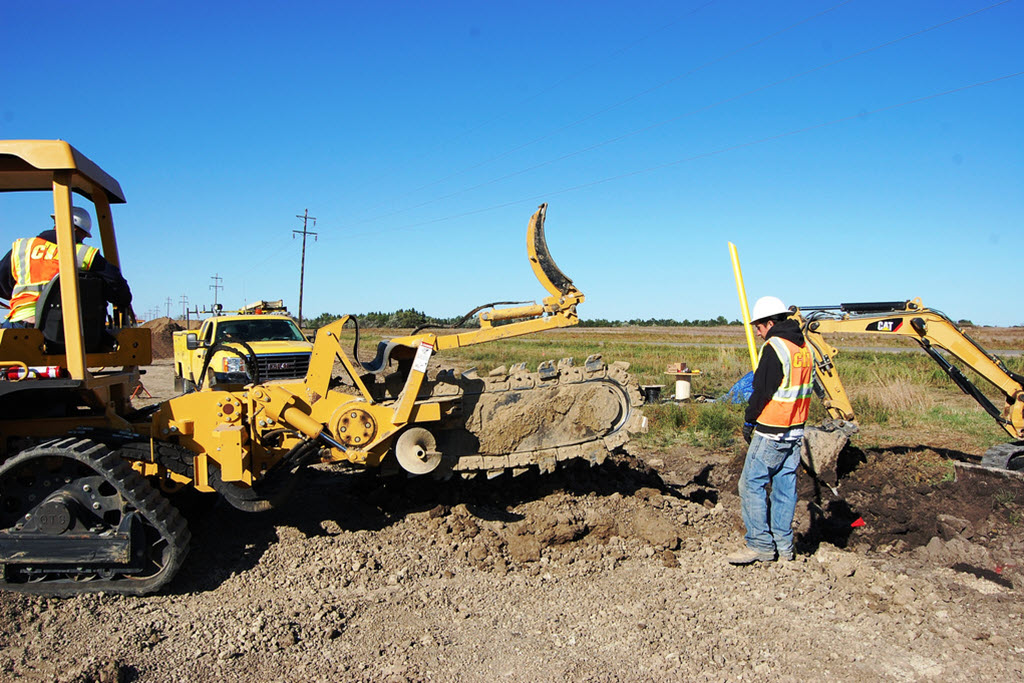Electrical Conduit Servicesin Marine City MI
Expert Conduit Installation to Support Electrical and Data Systems
We Are Locally Owned & Operated For Over 37 Years
Contact Us Today!
We Serve Businesses In And Around The Following Cities:
About Electrical Conduit Services
Introduction
Electrification is an essential keystone of any modern commercial property. As a thriving coastal city, Marine City’s businesses have always embraced progress and innovation, demanding not just operational, but efficient and safe electrical systems. One key aspect of such systems is the Conduit for Electrical Underground – a less intrusive, more aesthetically pleasing, and safer alternative to overhead power lines. Although adopting these advancements involves an intricate process, the benefits, demonstrated in real-world applications, are substantial.
The Process of Underground Conduit Installation
Underground conduit installation begins with a careful process of trenching for electrical conduit. The trenches cater to the conduit’s arrangement while ensuring adequate depth to protect the electrical cables from damage. During this process, potential hazards such as the proximity to gas lines are accounted for to avoid incidents. This safety-first approach highlights one significant advantage of installing PVC conduit underground over conventional overhead systems, mitigating the risk of accidents and impairments posed by severe weather, falling objects, or curious wildlife.
After trenching for underground electric, the next step is running the electric line underground. The underground electrical conduit houses these lines, providing a safe tunnel from the power source to the business premises. Superior materials such as PVC conduit for underground wiring are typically used, due to their resistant nature to soil acidity, water, and other potentially corrosive agents.
It’s important to mention, the process entirely aligns with the city’s regulations and ratios regarding trench depths and distances from utility lines. It capably demonstrates why a professional service like D&J Contracting is crucial for the job. Their wealth of experience and knowledge of local regulations ensures the task is completed accurately and efficiently with overall safety in mind.
Real-World Applications: Relevance and Value in Marine City
Embracing underground electrical conduit has several advantageous real-world applications. From key infrastructural developments like street lighting, data centers, hospitals, to commercial hubs, the benefits are evident. For instance, think about running an underground electric line to a hotel or restaurant nestled in Marine City’s picturesque waterfront. It eliminates the need for power poles or overhead lines, preserving the aesthetic appeal of the beautiful harborage that makes the city so unique.
One of the key tasks includes running electrical wire near gas lines during the installation process. While it may seem tricky, a seasoned contractor like D&J Contracting can conduct this task proficiently, ensuring that the protective conduits are in place and correctly distanced from other utilities as per the local codes. This not only guarantees safety but also facilitates future maintenance or upgrades without major disruptions.
What Businesses Stand to Gain
Adoption of Conduit for Electrical Underground offers tangible benefits to commercial establishments. Apart from the safety and aesthetic factors, it also minimizes the risk of downtime due to potential damage to exposed wires. A functional, continuous supply of electricity is pivotal for businesses to thrive, and this system proposition perfectly suits the requirement.
Moreover, it’s a sustainable and future-proof investment. As we advance towards more electrically dependent operations, this method of wiring increases its feasibility. Businesses looking forward to contributing to the city’s sustainability goals would also find this a favourable choice.
Living examples are scattered around Marine City where D&J Contracting has adeptly handled the installation process—contributing to the city’s booming commercial spaces while maintaining its natural charm.
Wrapping up the Discussion
Moving away from traditional overhead lines to adopting Conduit for Electrical Underground is not a simple switch. It requires careful planning, expert execution, and is a blend of compliance with city guidelines and a sustainable vision for the future. The process might involve some specific steps like using PVC conduit underground, trenching, or running an underground power to house, but the end-goal remains the same – to provide a safer and more efficient solution for electrical needs.
While the journey of transforming Marine City into an aesthetic yet technologically sound city might seem tiresome, it’s worth mentioning that professional services such as D&J Contracting are equipped to simplify this process. A collaboration that promotes a safe, efficient, and eco-friendly city while catering to businesses’ specific needs. Remember, the journey towards progress begins with a single step, and in Marine City’s case, it begins underground.
Electrical Conduit Services Gallery


Call Us Today to receive your Free Quote for
Conduit For Electrical Underground in Marine City
Serving: Marine City, Michigan

About Marine City, Michigan
The area of Marine City had been Ojibwa territory for centuries before the first European contact. Beginning in the 17th century, French trappers and missionaries entered the territory, followed by settlers in the colonial period on both sides of the Detroit and St. Clair rivers. Farmers developed long, narrow plots that were laid out in the typical rectangular shape of colonial French, with the narrow end along the riverfront. The first Catholic Church was built by French Catholics at Catholic Point, where they had bought land before the United States was formed. French Canadians also lived on the other side of the river in a small farming community known as Petite Côte.
It was not until after the American Revolution that European-American settlers arrived in any number. In the 1780s they obtained a deed for land from the Chippewa Indians. The Americans began to call the community “Yankee Point”, because so many settlers came from the Northern Tier of states, with late 18th and 19th-century westward migration originating from New England and New York. They also called the settlement “Belle River” (Belle Riviere in French), as the French had; this later was applied as the name of a neighborhood.
The village was platted by Americans as Newport in 1835–37. Although never incorporated by that name, it was known as “Newport” for 31 years. In 1865, it was incorporated as the Village of Marine City. Thriving on lumber trade and shipbuilding, the village re-incorporated as a city in June 1887.
The second half of the 19th century was the period of great growth in the village, with many workers employed in the lumber and shipping industries. Rafts of lumber were moved down the St. Clair River in the spring to be worked at Marine City or Detroit. Shipyards built some of the many wooden ships that crossed the Great Lakes. Lake steamers linked passengers with small towns around the lakes. Their decks were full and their flags were flying. Marine City was centered on a park by the St. Clair River, where bands played in the bandstand at City Hall during the summer.
As the lumber business ran down with the exploitation of forests, the area became linked to other resource extraction. Freighters carried iron from Duluth, Minnesota, which had been mined in the Mesabi Range, to Ashtabula, Ohio for steel processing. They passed from Lake Superior through Lake Huron and to Lake Erie. Marine City was known as the town on the St. Clair River where the captains of lake freighters lived. Many of these men and their crews worked for the Pittsburgh Steamship Company. Formed in 1901 by US Steel Corporation, it became the largest commercial fleet on the Great Lakes.
In the 21st century, Marine City has become the home of ten antique stores. The Snug Theater is a 98-seat theater featuring live performances. It will be joined in 2014/15 by a sister theater, The Riverbank Theater, in a former bank building (originally Marine Bank & Trust) down the street. Also joining the two acting theaters is the old Mariner Theatre, which serves as a special event center, movie theater, gallery for fine art Models, and site of the builders model for the ocean-going Titanic. Restaurants and retail in downtown also cater to visitors and residents.
The Heather House, now operated as a bed and breakfast, was built in the Queen Anne Victorian-style. It was completed in 1885 after 2 years of construction for its owner, William Sauber. He was chief engineer for the Mitchell fleet of Great Lake steamers.
- According to the United States Census Bureau, the city has a total area of 2.46 square miles (6.37 km), of which 2.15 square miles (5.57 km) is land and 0.31 square miles (0.80 km) is water.
- It is considered to be part of the Thumb of Michigan, which in turn is a subregion of the Flint/Tri-Cities.
- Marine City can also be considered as in the Blue Water Area, a subregion of the Thumb.
- It is part of the Detroit-Warren-Livonia Metropolitan Statistical Area (MSA) and the Detroit-Ann Arbor-Flint Combined Statistical Area (CSA).
| Census | Pop. | Note | %± |
|---|---|---|---|
| 1870 | 1,240 | — | |
| 1880 | 1,673 | 34.9% | |
| 1890 | 3,268 | 95.3% | |
| 1900 | 3,829 | 17.2% | |
| 1910 | 3,770 | −1.5% | |
| 1920 | 3,731 | −1.0% | |
| 1930 | 3,462 | −7.2% | |
| 1940 | 3,633 | 4.9% | |
| 1950 | 4,270 | 17.5% | |
| 1960 | 4,404 | 3.1% | |
| 1970 | 4,567 | 3.7% | |
| 1980 | 4,414 | −3.4% | |
| 1990 | 4,556 | 3.2% | |
| 2000 | 4,652 | 2.1% | |
| 2010 | 4,248 | −8.7% | |
| 2020 | 4,079 | −4.0% | |
| U.S. Decennial Census | |||
As of the census of 2010, there were 4,248 people, 1,765 households, and 1,117 families residing in the city. The population density was 1,975.8 inhabitants per square mile (762.9/km). There were 2,015 housing units at an average density of 937.2 per square mile (361.9/km). The racial makeup of the city was 96.8% White, 0.3% African American, 0.7% Native American, 0.2% Asian, 0.5% from other races, and 1.6% from two or more races. Hispanic or Latino of any race were 1.7% of the population.
There were 1,765 households, of which 31.1% had children under the age of 18 living with them, 44.6% were married couples living together, 13.3% had a female householder with no husband present, 5.4% had a male householder with no wife present, and 36.7% were non-families. 31.3% of all households were made up of individuals, and 14% had someone living alone who was 65 years of age or older. The average household size was 2.41 and the average family size was 3.00.
The median age in the city was 40.2 years. 22.9% of residents were under the age of 18; 8.2% were between the ages of 18 and 24; 25.8% were from 25 to 44; 27.9% were from 45 to 64; and 15.3% were 65 years of age or older. The gender makeup of the city was 48.2% male and 51.8% female.
As of the census of 2000, there were 4,652 people, 1,860 households, and 1,212 families residing in the city. The population density was 2,120.8 inhabitants per square mile (818.8/km). There were 2,006 housing units at an average density of 914.5 per square mile (353.1/km). The racial makeup of the city was 97.29% White, 0.09% African American, 0.56% Native American, 0.26% Asian, 0.86% from other races, and 0.95% from two or more races. Hispanic or Latino of any race were 1.38% of the population.
There were 1,860 households, out of which 33.5% had children under the age of 18 living with them, 48.2% were married couples living together, 12.7% had a female householder with no husband present, and 34.8% were non-families. 30.8% of all households were made up of individuals, and 14.4% had someone living alone who was 65 years of age or older. The average household size was 2.50 and the average family size was 3.15.
In the city, the population was spread out, with 27.6% under the age of 18, 8.2% from 18 to 24, 30.5% from 25 to 44, 19.4% from 45 to 64, and 14.2% who were 65 years of age or older. The median age was 36 years. For every 100 females, there were 90.4 males. For every 100 females age 18 and over, there were 88.6 males.
The median income for a household in the city was $40,146, and the median income for a family was $47,308. Males had a median income of $39,228 versus $23,677 for females. The per capita income for the city was $19,722. About 7.6% of families and 8.9% of the population were below the poverty line, including 9.0% of those under age 18 and 16.1% of those age 65 or over.
Call Us Today to receive your Free Quote for
Conduit For Electrical Underground in Marine City
Related Services in Marine City, Michigan
We Serve Businesses In The Following Zip Codes:
48007, 48015, 48021, 48026, 48035, 48036, 48038, 48042, 48043, 48044, 48045, 48046, 48047, 48048, 48050, 48051, 48066, 48071, 48080, 48081, 48082, 48083, 48084, 48085, 48088, 48089, 48090, 48091, 48092, 48093, 48098, 48099, 48225, 48230, 48236, 48310, 48311, 48312, 48313, 48314, 48315, 48316, 48317, 48318, 48397